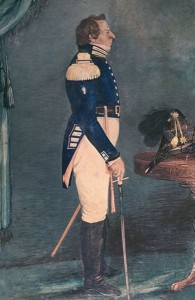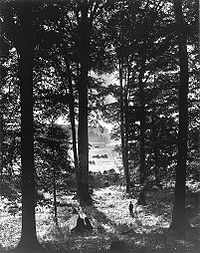As a kid I read a lot of comic books. I enjoyed studying the intricate character storylines consisting of their origin stories, their many adventures and their overlapping histories with other super heroes. The result was an impressive creation, a universe akin to the corpus of classical Greek and Roman mythologies. As I grew older my interest in comic book mythologies waned, only to be replaced by an obsession with religion, Mormonism in particular. I found myself replacing my earlier zeal for the study of comic book heroes with an intense engagement with the characters of the Mormon universe, their origin stories, their many adventures, their overlapping histories with other characters, in essence, the mythologies of Mormonism.
I’ve noticed that in considering the mythologies of comic books and Mormonism, the origin story seems to loom large in the imagination. How a comic book hero obtained his/her powers was always a riveting read. Likewise, so was the calling of Joseph Smith and other Mormon figures (including those recounted in Mormon scriptures). And the frequent retelling of these stories for new audiences and new eras held the highest fascination of all.
Batman’s origin story has been told numerous times, and, with each retelling, his character gets “rebooted.” Originally, in the late 30s, he was launched as a pistol-toting, caped crusader against crime, much like the Shadow, but the gun was soon dropped to minimize the character’s dark side. Later, to make him more appealing to children, he got a less fearsome side-kick named Robin and his bat ears got less … intimidating. By the 50s Batman was more likely involved in outlandish science fiction-styled adventures than fighting crime. By the 70s, Batman was again rebooted to focus on his roots as a detective. By the 90s, he was yet again transformed, this time as the psychologically troubled “dark knight” we know today.
 The most fascinating origin story of Mormon Myth is that of Joseph Smith. In his many accounts of his own origin story, “The First Vision,” Joseph reboots himself on each occasion (for a fair summary, see http://en.wikipedia.org/wiki/First_Vision). In his earliest tellings (circa 1830 and 1832), Joseph’s story is a personal account of how he received forgiveness of his sins. In the later 1835 account, while noting his forgiveness of sins, he focuses more on the power of satan attempting to thwart his path and the competing truth claims of various religions and God’s answers about religious claims. By his 1838 account, which became the canonical version in the LDS scripture, The Pearl of Great Price, Smith has an expanded account that better reflects his own understanding of the Godhead, his growing religious movement and his own place in it as prophet.
The most fascinating origin story of Mormon Myth is that of Joseph Smith. In his many accounts of his own origin story, “The First Vision,” Joseph reboots himself on each occasion (for a fair summary, see http://en.wikipedia.org/wiki/First_Vision). In his earliest tellings (circa 1830 and 1832), Joseph’s story is a personal account of how he received forgiveness of his sins. In the later 1835 account, while noting his forgiveness of sins, he focuses more on the power of satan attempting to thwart his path and the competing truth claims of various religions and God’s answers about religious claims. By his 1838 account, which became the canonical version in the LDS scripture, The Pearl of Great Price, Smith has an expanded account that better reflects his own understanding of the Godhead, his growing religious movement and his own place in it as prophet.
Among Mormons today, Joseph Smith’s First Vision is not just considered the origin story, or prophetic call, of Joseph Smith, but the origin story of Mormonism itself (at least in modern times). It is usually the starting point for explaining LDS beliefs and history and is often the model for Mormon converts in recounting their own conversion stories, but this was not always the case. In fact, according to James Allen, the focus on the First Vision is a later development in Mormon thought, a reboot (see James B. Allen, “The Significance of Joseph Smith’s First Vision in Mormon Thought,” Dialogue: A Journal of Mormon Thought, 1 (Autumn 1966).)
The First Vision is not the only facet of Mormon myth, history or thought that has been reconceived since 1830. Consider Book of Mormon geography, LDS racial doctrines, polygamy and many other polices, practices and doctrines that have been rebooted. In fact, Mormonism itself can be considered an attempted reboot of Christianity, just as Christianity was a reboot of sorts of Judaism.
Do you see any impending reboots of Joseph Smith or of our collective Mormon Myth? How would they be shaped?

I think Arnold Friberg’s paintings of the Book of Mormon scenes have a comic book quality to them. Where is Nephi finding all that time to hunt for food AND power lift? If righteousness could give me ripped arms, I would have done my home-teaching a lot earlier in the month.
Good points!
And, illustrations of the BoM tend to “reboot” them, that is, we view the text differently because of the illustrations. Compare Friberg’s illustrations (AHHHNOLDDDT!) to, say, Minerva Teichert’s illustrations (more like a Degas interpretation of the BoM as a ballet with horses).
I’ve noticed this “rebooting” that seems to happen with a lot of historical events in my study of my ancestry. I have collected and read many pioneer journals, articles, and stories. There is definitely a very different version presented as “cleaned” current fact – versus a person’s journal account. Also, as I have done family genealogy – there is definitely pressure from family “clean” up dates and facts that would be embarrassing to the person who has passed away. Don’t I know the correct marriage date was a few months earlier – because how could the first child have been born 4 months early? It’s a conflict with the quest for honesty.
This creates a very serious conflict within me – because I choose the honesty before I choose the church or pious approval. Since I’m only human, it makes me think of a corporate public relations campaign. Almost any story can be spun to the larger groups advantage when the right person gets ahold of it. Group-think tends to clean up things into tidy easily chewable packages which are easy for converts and the general population to swallow right?
Remember when B H Roberts wrote a book in the temple . . . the book went unpublished for 100 years because he had some personal conflicts with the current prophet. I can’t help but wonder what might be taken as fact by the current church if we had B H Robert’s version of Adam as a alien (a city of Enoch personage) from another planet as a core doctrine – instead of Joseph F. Smith’s version. No one has ever disputed B H Roberts material – just hid it until he was no longer relevant, I guess. That is a very interesting read by the way if you happen to stumble upon it or like that sort of thing.
On a more serious note, I had two or three stake presidents while I was growing up in my home town.
One stake president, who was also the superintendent of schools, invited a foster child into their home when I was in high school. The 16 year old girl was conflicted and later grew up to become a transexual – who went through the process to become a man. A family member walked in on the stake president’s wife and the 16 year old in a sexual relationship. The apostle came – the stake president was released – the stake president’s wife was slapped on the wrist – the statutory rape was swept under the carpet – and the family member and his family were disfellowshipped because they kept talking about the situation to everyone – later the stake president became stake president again (still married to his wife). By the way – no one reported this to the authorities appropriately – even though the superintendent would be a mandatory reporter of such abuse, the child was in the foster care program etc. Broken laws. As an active member, I knew instinctually this was taboo and my membership would be at risk to discuss this. It actually tortured this family over the years. I have to wonder if it would have been easier in some ways if the wife had served some time and be at least disfellowshipped. The son who was friends with the 16 year old was very very affected and even blamed himself because it was his friendship that caused the 16 year old to be fostered in their home. I’m sure their family journals will be “cleaned” of this entire situation. In a way, I wonder if it will ever be “clean” for their souls because there is a dishonesty and a debt not paid right?
Another stake president was found recently to be molesting his grandchildren. Fortunately, they didn’t go to the church first – they went to the sheriff. He’s in his 80s and in jail. His family is torn. One daughter cannot understand why her 7 other siblings cannot forgive him. Personally it explains who the several strange sexual behaviors in his flock – went untended – even women accused of causing “fallen eagles” (his exact words for women causing Mormon men to stray). Lots of affairs and broken marriages.
Then there was the stake president who asked me repeatedly during my own mission interview if I was gay or had gay tendencies- I guess I earned this questioning because I was educated and employed? Maybe outspoken? I should have said yes to see what the remedy would be – that would have been interesting to see if they would attempt to “clean” me up – or just throw me out.
As an active member I dutifully ignored these happenings. As a very inactive member – if a member at all – I look back on this and think of all the dishonesty that was required. And dysfunction. And I will write a history the church may like – about my true family and the goings on. My personal journal is going to reflect my real musings – not the scrubbed wording I think my Bishop would like. I actually think I do the church, my family, and myself a better service by dealing with information instead of covering things up to fester.
I hope God helps all the families involved in the dealings above heal in whatever manner is appropriate. I hope he helps me in my own journey – to tell the first version and not the repeated reboots.
Angie, thanks for your thoughts.
Yes, I agree some forms of “reboots” can be used to hide or (as people like to say nowadays) “re-purpose” things. I think in the incidents you share, “rebooting” is harmful and, as you note, holds people back from the healing process that might require incarceration. I don’t mind if an historical element of Mormonism is rebooted (not covered up) so that new truths are teased out of it, so that it is made more relevant, speaking to our current issues and understandings, rather than leaving these elements in their, possibly, current, stale state, tying us to narratives that no longer move us or motivate us.
If, for instance, the 1832 account of the First Vision were more celebrated and offered as an alternative “canonical account” (just like there are multiple versions of the creation story in Genesis, Moses, Abraham and the temple), there would be an invigorating “reboot” about the way average LDS members might view the event, they may take comfort in the fact that Joseph Smith was concerned over his own sins and frailties. I, at least, remember feeling this way when I first encountered the 1832 account and I wanted to share it with others.